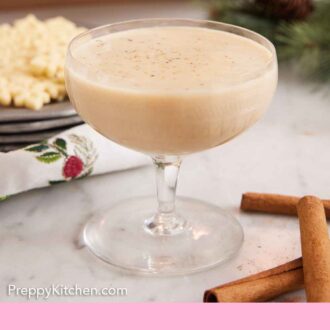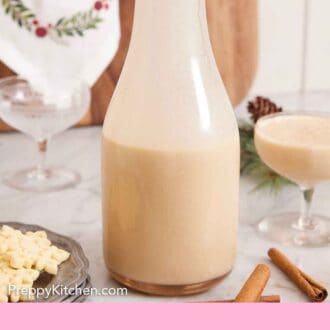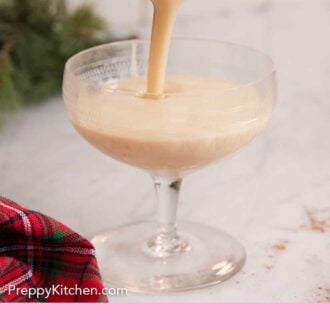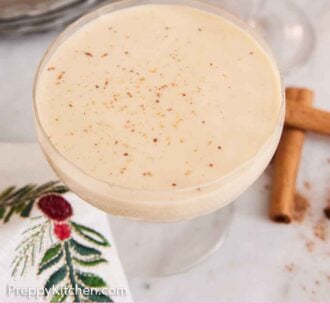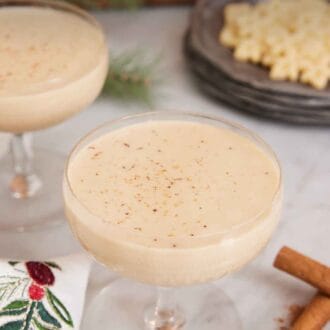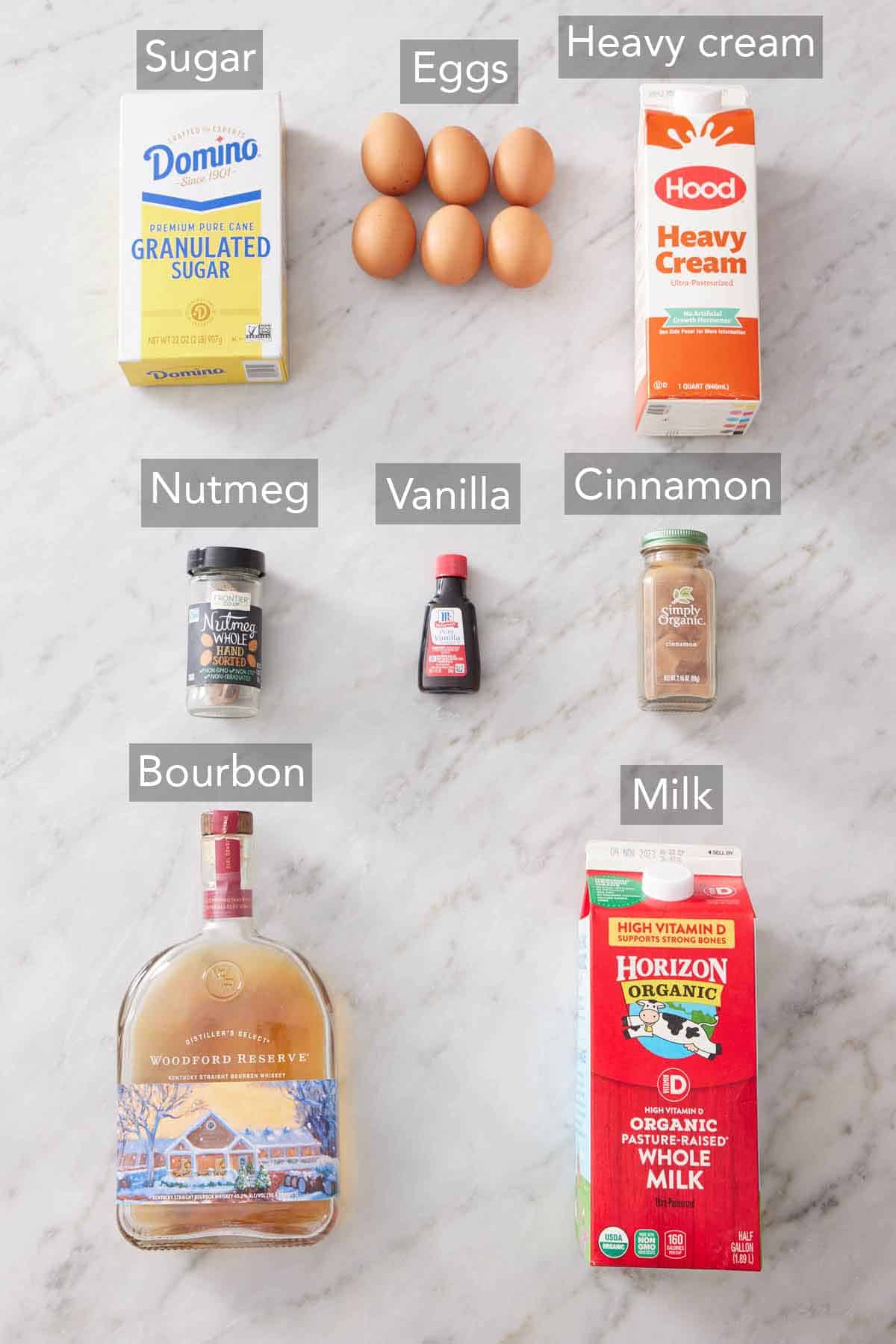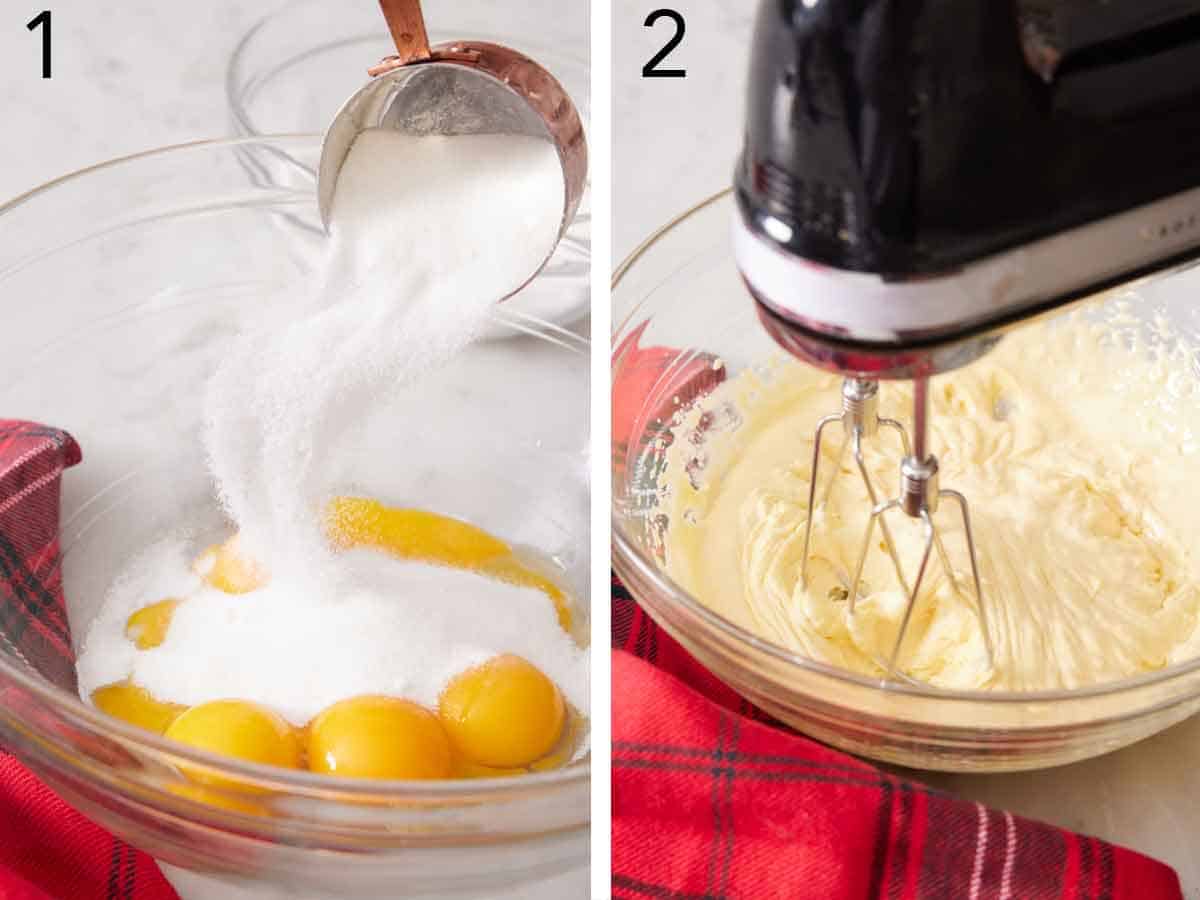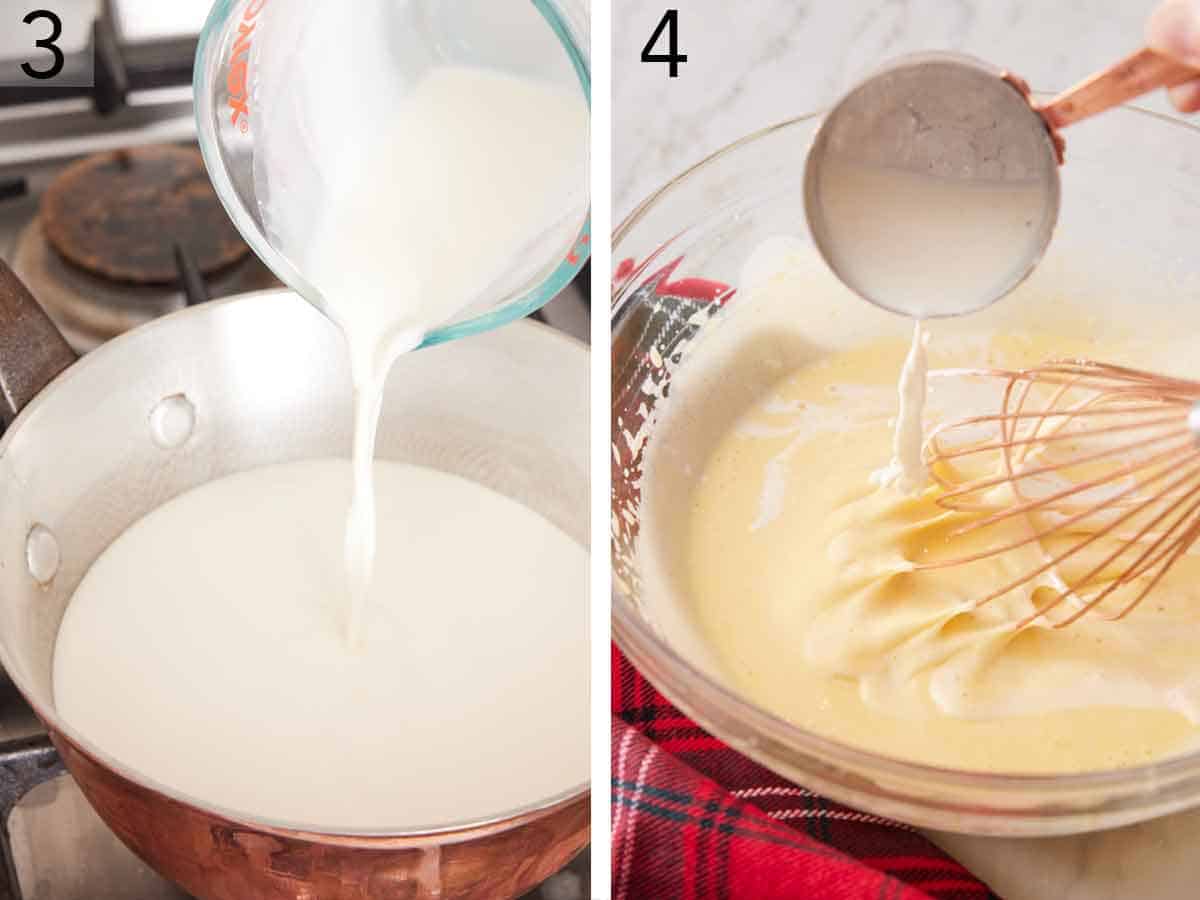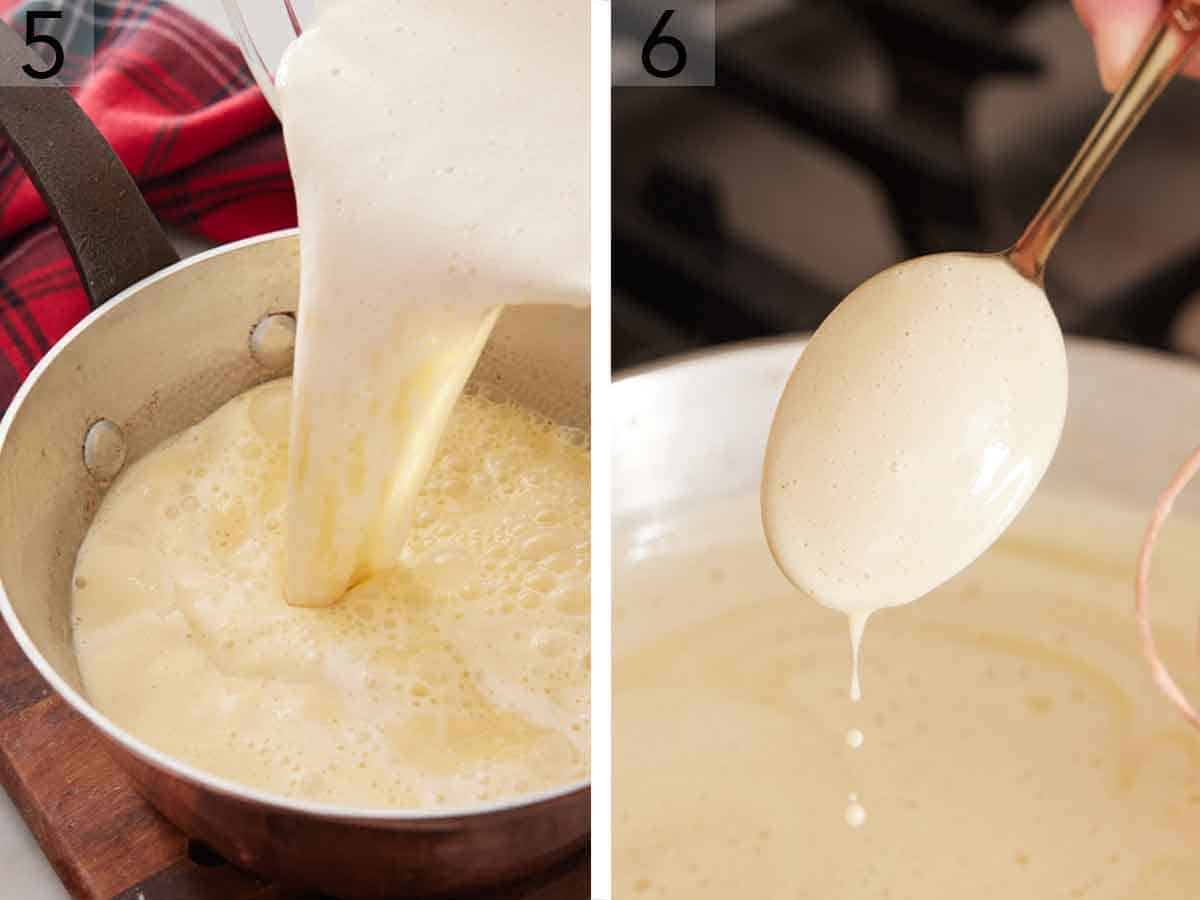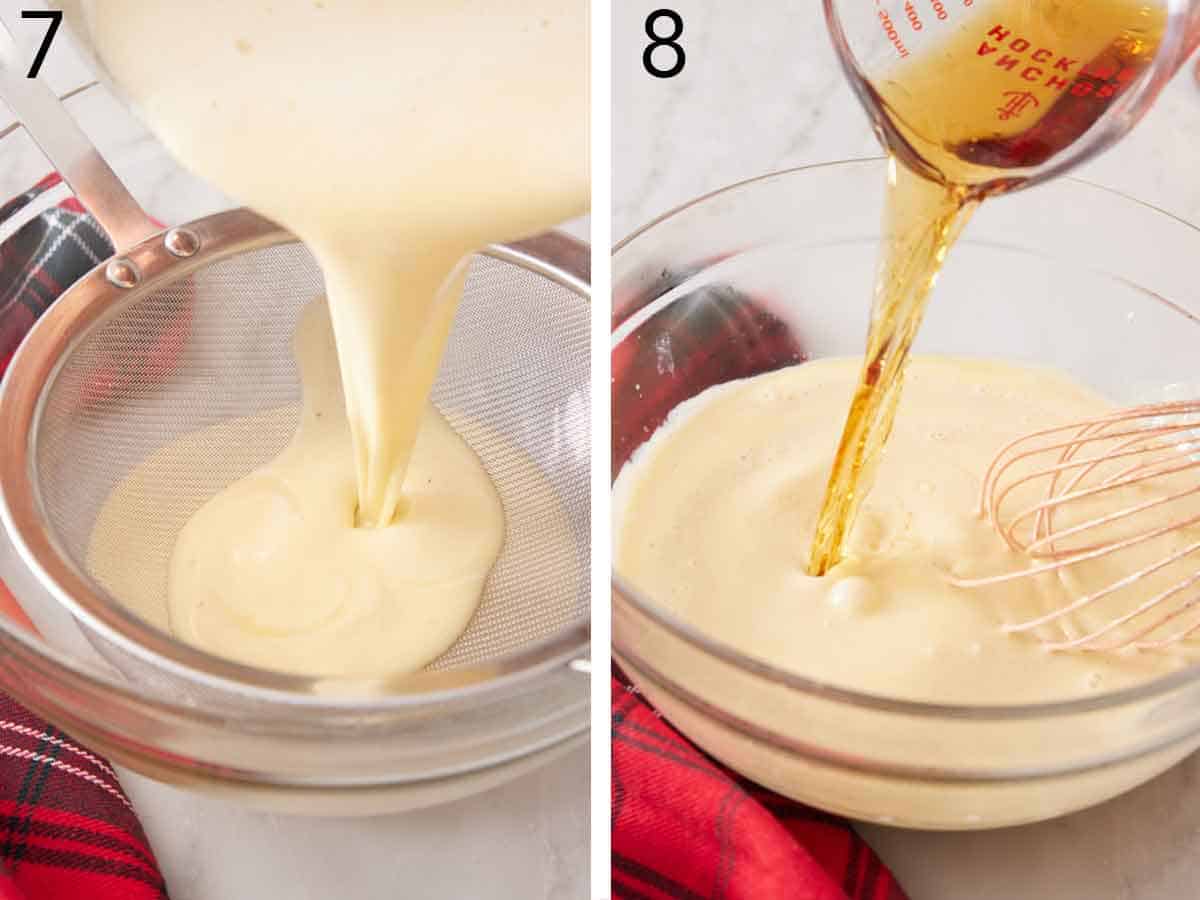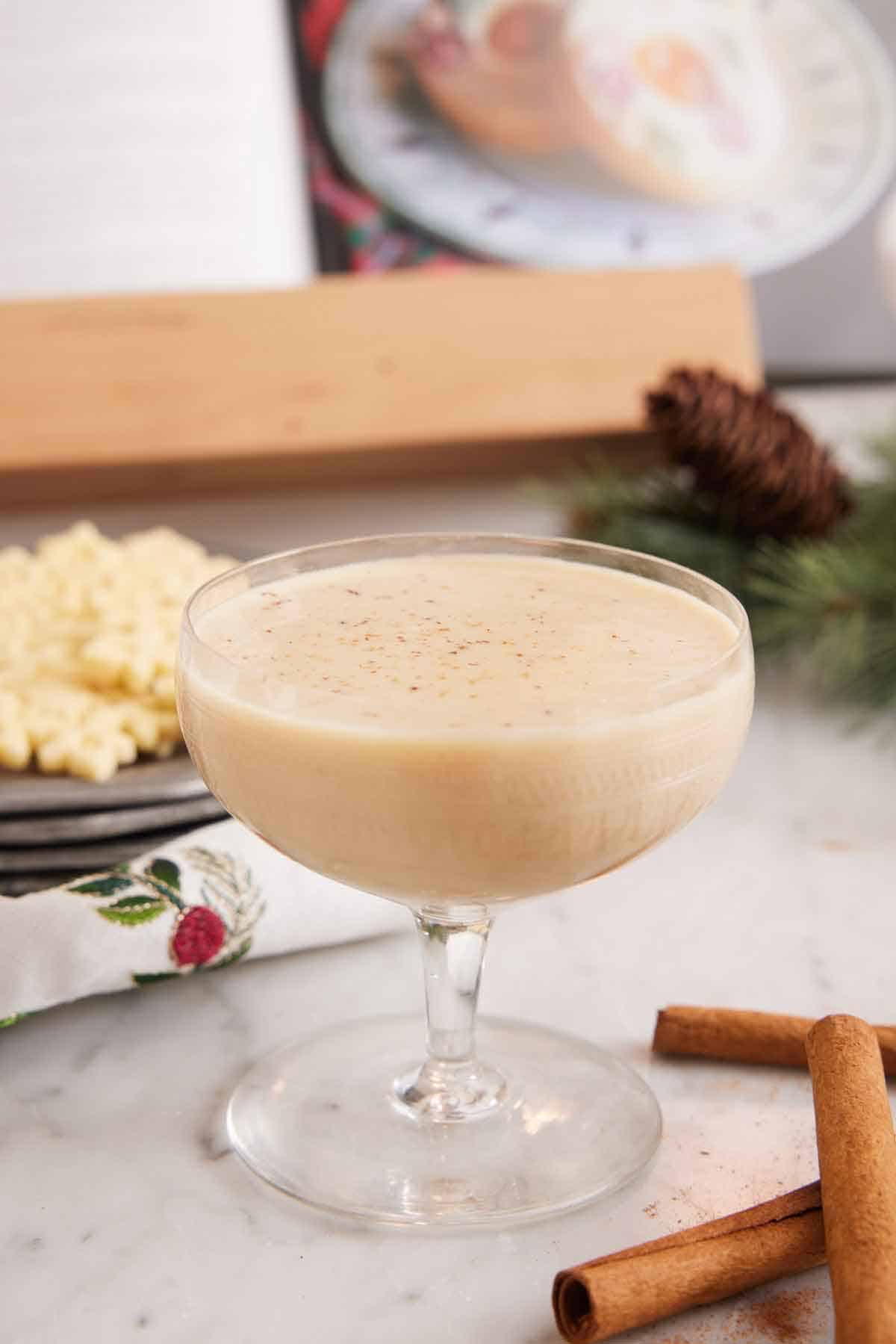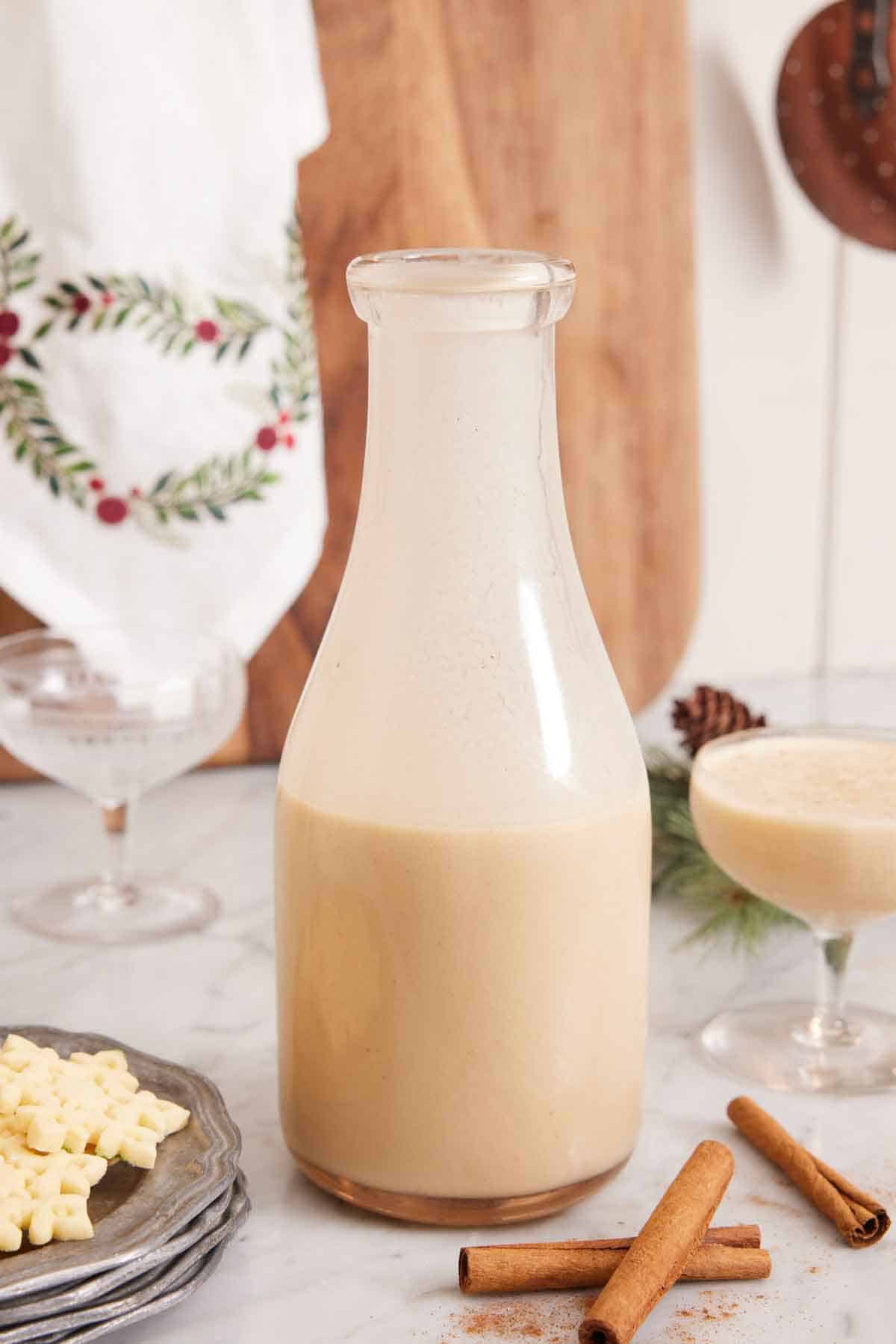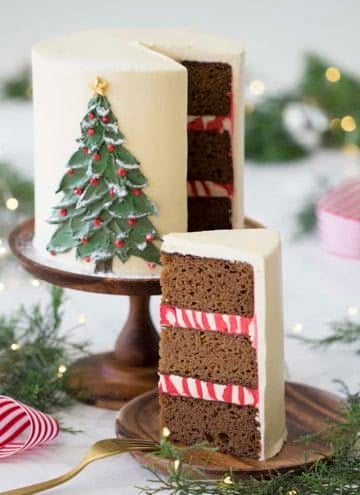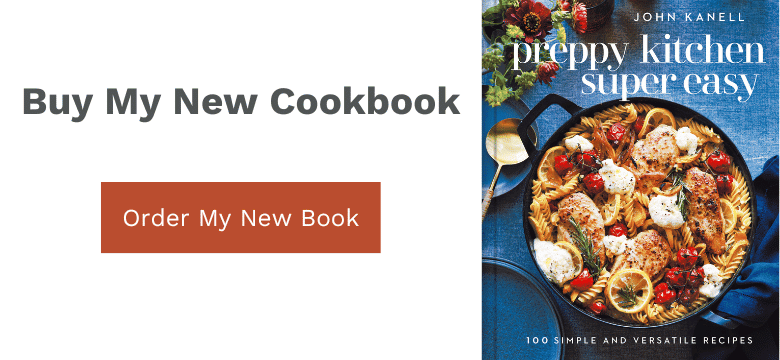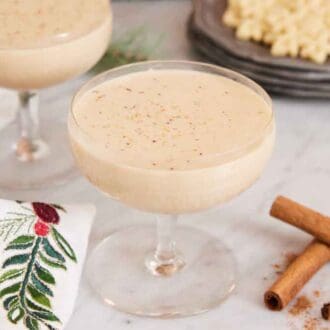Make this classic eggnog recipe with your preferred bourbon, rum, or brandy, or make extra light and airy cocktails by adding in whipped meringue made with egg whites. And, because it’s cooked on the stove, it’s safe to consume if you want to make it nonalcoholic and suitable for any guest at your holiday party. Finish this classic Christmas cocktail with a sprinkle of nutmeg or cinnamon for extra cheer to pair with your favorite holiday desserts. For more drink recipes to sip all holiday season, try my peppermint martini recipe, coquito recipe, or mudslide.
What You Need to Make This Recipe
Egg Yolks – eggs are what make this drink extra rich and velvety. The eggs are cooked on the stove with sugar, milk, and cream so there’s no need to worry about consuming raw eggs. Use large eggs for this recipe. Heavy Cream – the cream and whole milk are essential for making this recipe creamy and decadent. If you choose to omit the alcohol from this recipe, you’ll need additional milk or half and half for the correct texture. Nutmeg – adds a warm and comforting spice that makes this drink taste Christmasy. Freshly grated nutmeg has superior flavor compared to store-bought ground nutmeg, so grate your own when possible. Use ground cinnamon if you don’t like nutmeg. Bourbon – use bourbon, rum, or brandy to take this recipe from a holiday drink to a cocktail! The alcohol is optional, so you can substitute it with additional milk or hold it back and add it to individual glasses when serving.
How to Make Eggnog
- In a large mixing bowl, combine the egg yolks and sugar.
- Whisk vigorously by hand or beat with an electric mixer on medium speed until the yolks are very thick, pale, and fluffy about 1 minute. Set aside.
- In a medium saucepan, combine the milk, cream, and nutmeg. Place over medium heat and cook, stirring occasionally until steaming, about 3 minutes.
- Whisk ½ cup of hot milk into the egg yolk mixture, then slowly whisk the rest of the milk into the egg yolks.
- Return the mixture to the saucepan.
- Place over medium-low heat and cook, stirring constantly until the mixture is thickened enough to coat the back of a spoon or your desired consistency, then remove it from the heat. Do not boil. The mixture should reach at least 160°F but for a thicker eggnog, cook to 190-200°F.
- Strain the egg nog mixture through a fine mesh sieve into a bowl.
- Whisk in the bourbon and vanilla. Chill for at least 3 hours or until ready to serve. Serve with a sprinkling of cinnamon or freshly grated nutmeg.
Pro Tips For Making This Recipe
For non-alcoholic eggnog, substitute milk or half and half. For an alcohol-free version, replace the bourbon with the same amount of additional milk or half and half and add it to the saucepan to warm. Whisk the hot milk mixture into the eggs slowly. Start by whisking in ½ cup of the hot milk to temper the eggs, then slowly add the remaining milk while whisking. No cooking option. You can make a non-cooked version of this recipe, but you will need to include the alcohol or use pasteurized eggs to serve the raw eggs safely. After beating the yolks and sugar, beat in the bourbon until well combined. Then immediately whisk in the milk, cream, nutmeg, and vanilla extract. Chill for 1 hour or until ready to serve. Strain the cooked egg mixture. For the best eggnog that is smooth and creamy, pour the cooked mixture through a fine mesh strainer. For the easiest pouring, place the strainer over a large bowl or 8-cup glass measuring cup. For frothier eggnog, make use of the egg whites. Once the eggnog recipe is combined and chilled, beat the egg whites with 2 tablespoons of sugar in the bowl of a stand mixer until soft peaks form. Use a whisk to fold the egg whites into the chilled eggnog. Serve immediately. For thicker eggnog, use less milk. 2 cups of milk will make a smooth and creamy eggnog, about the consistency of heavy cream. Less milk will make the eggnog recipe thicker and more custardy in texture. If you’re uncertain which you’d prefer, use less milk in the recipe, and add more milk or cream to thin out the batch or individual servings once chilled, if desired. Alternate thickening method. Instead of reducing the amount of milk used, you can cook the eggnog longer, until it reaches 190-200°F for a thicker texture. Use extra eggnog for baking. Eggnog is delicious in baked goods, especially in my eggnog cake recipe or eggnog cookies recipe.
If you’ve tried this eggnog recipe, then don’t forget to rate the recipe and let me know how you got on in the comments below, I love hearing from you!
